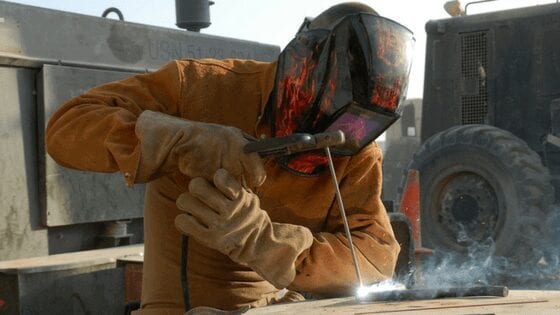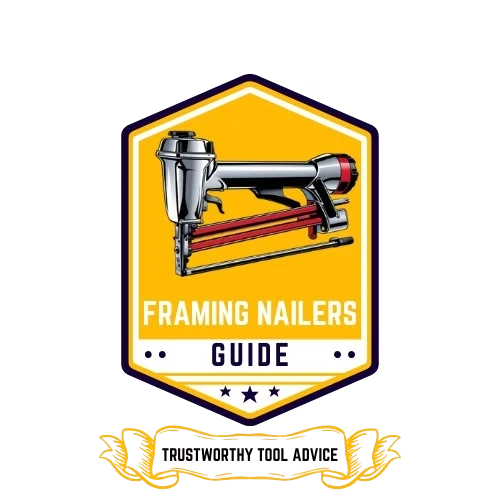
Table of Contents
Last Updated on December 17, 2024 by John Patterson
Before we start guiding you on how to use a MIG welder, let us ask you an important question.
Do you have a quality MIG welder? If not, find the best one from our top-welder brand’s list.
As a beginner, it is always important to look for a user-friendly welding machine. That said, starting with a TIG or stick welder may not be the best course of action.
TIG is only for particular applications and is much more complicated in comparison to MIG welder. Pulling the trigger on the MIG welder is all you need to do. There’s no messing around with foot pedals or rods.
How to use a MIG Welder: Real User Explained
Choose the right equipment.
The primary thing to do is pick the right MIG welder, which in the majority of the cases is 185 amp. You can go with a 140 amp machine if you are starting. The welding machine can handle thick steel up to 1/2,” and which is not so bad.
And while the MIG welder can utilize a flux core wire, make sure it has an option for hooking up a gas tank. Don’t go for the cheapest MIG welder or you may regret it later when you most need it for particular projects. Stick with popular brands to be on the safe side.
You will also need to get the right welding equipment that includes a helmet and flame-resistant protective clothing besides the best welder for beginners. The ultraviolet rays that come from the MIG welder are quite harmful, and you need adequate protection for the skin.
Other essential welding equipment includes leather boots, fitting gloves, welding sleeves, shirts, t-shirts, pants, and cotton clothing.
Learn how to use the machine
It is essential to learn how to tune the MIG welder, or you may end up with laughable results. You must know how to set the rate to melt the wire at a consistent pace. Turn down the wire speed, and always follow the chart that comes with the equipment.
The weld puddle needs protection from the weather, and the tank of shielding gas can play that role quite well. Make sure that the travel angle is at 15° consistently so that you can see clearly and allow good coverage of the gas.
You can as well use flux core wire welding that does not require the protection of the gas. That means you can use the flux core wire welding outdoors. Typically, the wire is filled with a flux that performs the same role as the gas.
When you have the gun at the right angle, pull the trigger, and the arc will start. Go slowly and be as hot as possible without burning through the metal. The travel speed will depend on the thickness of the metal. Typically, you can start with the small pieces of metal to run the basics.
Keep checking the size of the weld bead to know whether you’re going at the right speed. Ideally, it should not be too thin and snake-like. Also, the blueing that occurs after welding will give you a good idea of whether you’re doing it right.
As a beginner, the main idea should be to put some work into the skill. The more you weld, the better you are going to get, and before you know it, you are a pro.
Safety Tips for Welding

No doubt, welding is one of the most critical activities at the center of every exciting DIY project. Regardless, welding exposes you to various hazards common to everybody, whether a professional or a beginner.
To increase productivity, and prevent injuries, every welder must follow the following essential safety tips.
Don’t ignore the operating manual.
Mechanical equipment comes with an operating manual to guide the users on best practices. It is not uncommon for people at a skilled level to ignore the manual, but that is one of the biggest mistakes they can make. Each model of the welding machine may have different features and functionality which they may not be familiar with. Ideally, don’t ignore the operating manual.
Always use the safety gear
Working with the welder is quite different from any other job, and you should wear the necessary protective gear. Short-sleeved shirts and shorts do not belong anywhere near the welding workshop. Choose flame-resistant clothing, and the appropriate gloves for the kind of welding you will be using.
Don’t handle the just welded materials with bare hands. Use pliers.
High-top leather boots provide adequate protection to your feet from flying sparks and ultraviolet rays.
The new helmets come with an auto-darkening feature to make them appropriate for a variety of applications. That means you can use it in grinding, cutting, and welding. They are quite versatile.
Recent developments in helmets include an electromagnetic sensor that efficiently and quickly senses the arc and darkens the shield automatically, thereby, offering full protection.
Read our top budget welding helmet reviews.
Wear the necessary protective clothing
The infrared and ultraviolet rays from the welding machine are not only harmful to the eyes, but also the skin. Cover up!
Most people tend to only focus on eye protection, and leave everything else exposed, and that is not the way to go.
Sparks can ignite in folded cuffs, and open pockets. Ideally, always button the shirt collars, and all pockets should be closed. Do not keep any butane lighters and matches inside your pocket as it is a risk hazard.
Work in well-ventilated areas
Shielding gases and toxic fumes from the welder can quickly replace oxygen in confined spaces, and that can make it hard to breathe. Work in open areas with a good flow of oxygen, and use the exhaust hood, whenever necessary to clear the air.
You may need respirators when working on specific materials. Therefore, consult the manufacturer’s manual of the electrode on how to go about it.
Shield the eyes
It takes only a glance at the welding flame to experience the painful condition in the eyes after several hours following exposure. Use the appropriate and recommended filter shade in helmets to provide adequate protection to your eyes.
You should also wear side shield safety glasses inside the helmet. Please note that the mask alone is not sufficient, and you need additional protection for the eyes.
Organize the working area
The welding area should be clear of clutter to avoid accidents such as trips and slips. Don’t allow any other tools and equipment near the welding area, and always remove any finished projects.
In conclusion:
Thanks for being with us. We tried our best to give you a practical idea of how to use a Mig welder. If you have any questions or suggestions, please let us know by commenting here. Happy Mig welding.

